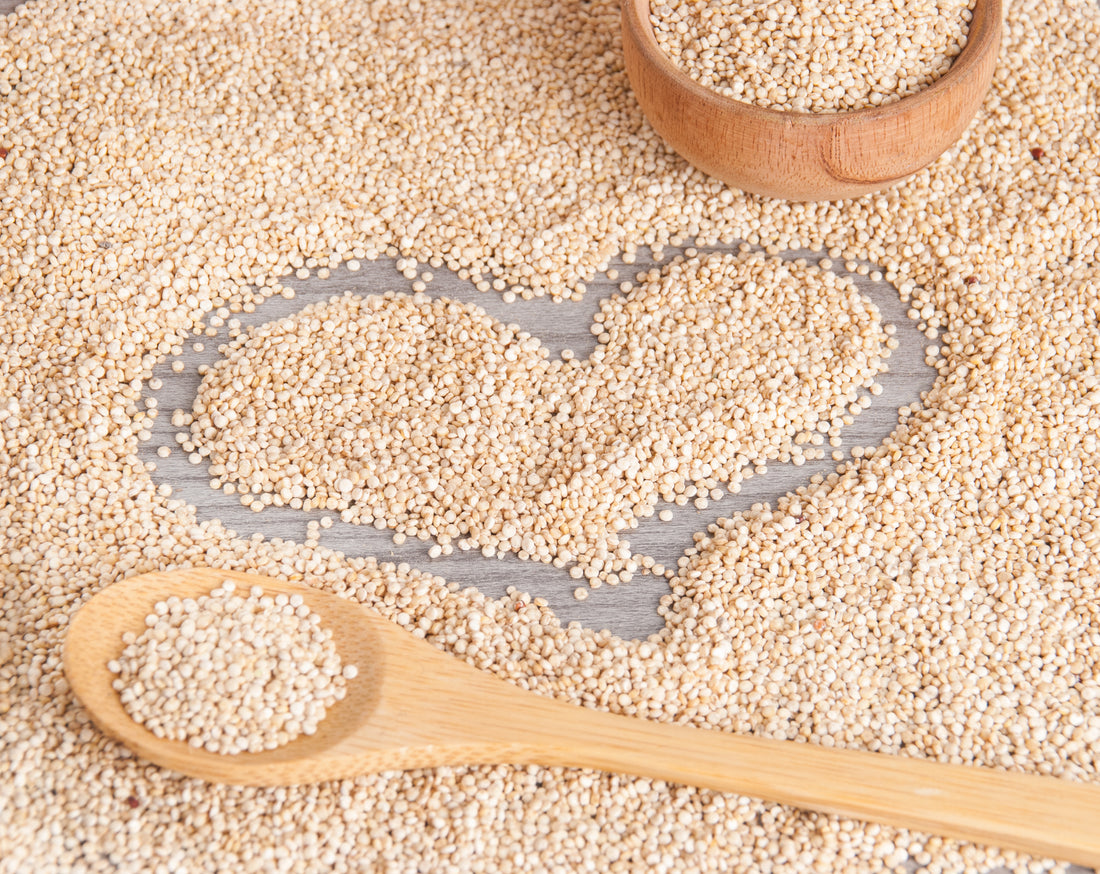When it comes to food alternatives there are many options in the market, making the right decision should always rely on two big factors: calorie content and nutrition profile per serving size.
Sometimes we must choose between one and LKJGK+- the others; but sometimes, we can come across unique foods, a food that has it all, adequate calorie content and a high nutritional value; well, look no further than Quinoa, a relatively new food for the market, however, it is gradually becoming popular and one of the reasons behind it is because Quinoa is an all in one food, so let’s talk about it.
THE ANCIENT GRAIN
Quinoa is a grain (classified as cereal in nutrition) native from the Peruvian Andes Mountains of South America and botanically belongs to the Amaranthaceae family, the same family as sugar beet and spinach, having a rich profile of micronutrients, higher than other cereals such as rice and wheat.

Quinoa is an ancient food, it has a history in the diet among one of the most powerful civilizations on the American continent, the Incas Warriors in Peru.
Ever since it has been consumed by the people of these regions for over 5,000 years. It was a staple for the Inca Warriors and is still a prominent food source for their indigenous descendants, the Quechua and Aymara people. In the past, it was considered a sacred crop to the Incas who called it the mother of all grains or “chisaya mama”.

NUTRITIONAL PROFILE
Quinoa sets apart from other cereals not only by its micronutrient ratio but by being the only plant-based food to contain the 9 essential amino acids (EAA) that makes up a complete protein [1]

To put into context, all animal protein sources such as eggs, milk, beef, poultry, fish, etc. are high in the 9 EAA, they are called essentials because our body cannot produce them, so we must get them with through the diet. Other plant-based protein source foods mentioned in the literature to be complete proteins are not [2]. This is because two factors, one being that foods such as beans do have protein but are limited in the essential amino acid methionine, and second even if a plant-based source is complete in the 9 EAA its digestibility is very low compared to an animal source, around 20% less absorption [3].
When it comes to Quinoa, the data shows that is digestibility is as high as some animal-based protein foods [4] making Quinoa the king plant-based source of protein with the 9 EAA and high digestibility.
Quinoas carbohydrate source is made of complex carbohydrates, meaning they take longer to digest and do not raise blood glucose as simple sugars or refined sugars. In addition, it has a low level of fat, making it an excellent low-calorie content food, therefore its low glycemic index and low-calorie count, makes Quinoa a friendly recommendation aid in the diet of people with diabetes (DM) [4].

With regard to its micronutrients contributions, Quinoa shows superiority over other cereals in terms of phosphorus (P), magnesium (Mg), potassium (K), iron (Fe), zinc (Zn), and some with regard to calcium (Ca) and manganese (Mn). Also, Quinoa packs a variety of vitamins, including vitamins A, C, D, E, folic acid, thiamine, riboflavin, and niacin [5].
As a consequence of what has been described, Quinoa has acquired the term “Super-food”, which is not a valid scientific term, the label is taunted because of the enrichment of nutrients in its composition.
USEFULNESS OF QUINOA IN METABOLIC DISORDERS
Celiac disease (CD) is an inflammatory disorder of the gut induced by ingestion of gluten, gluten is a protein mainly found in foods such as wheat, rye, barley and flour, the CD is developed in genetically susceptible people.
In the majority of patients with CD, the only and most effective treatment is the diet. In almost all of the cases, symptoms disappear with a gluten-free diet [6], therefore, the consumption of Quinoa being gluten-free food, is an excellent alternative to incorporate into the diet of people with CD.
Quinoa is an all in one cereal, that not only brings energy with its complex carbohydrates but it is a complete protein with its 9 EAA and high digestibility and low-fat content cereal with very low-calorie content.
The micronutrient ratio makes Quinoa a must in the nutrition of all the people in general, and particularly, it can bring added benefits in the persons with DM and/or CD as a nutritional treatment.

Here at Wholefort, we care about your health thus we promote a healthy lifestyle and adequate nutrition that comes along that mentality. This is why we have developed high-quality foods to help you reach your goals.
Our quinoa-based cereals are formulated to provide you in each serving size with the benefits of quinoa and the other ancient superfoods which are being rediscovered and brought to you by Wholefort.
REFERENCES - Written by Antonio Reyes RDN
-
Food and Agriculture Organization/World Health Organization. (1990) Protein quality evaluation; report of the joint FAO/WHO expert consultation.
-
Finley JW (1985) Reducing variability in amino acid analysis in Digestibility and Amino Acid Availability in cereals and Oilseed, pp. 15–30.
-
Rutherfurd SM & Sarwar-Gilani G (2009) Amino acid analysis.
-
Abugoch-James, Lilian E. 2009. Quinoa (Chenopodium quinoa Willd.): composition, chemistry, nutritional, and functional properties.
-
Abugoch, Lilian E.; Romero, Nalda; Tapia, Cristián A.; Silva, Jorge and Rivera, Mónica. 2008. Study of some physicochemical and functional properties of quinoa.


